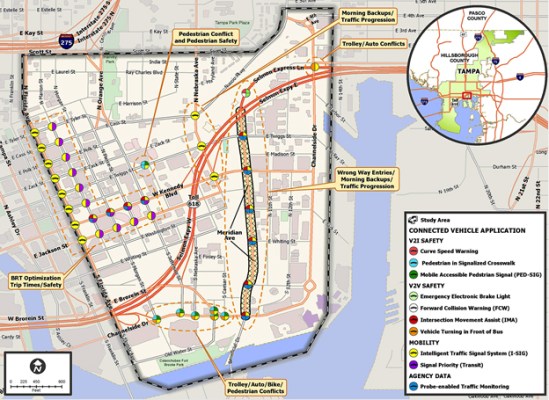The Tampa-Hillsborough Expressway Authority (THEA) has partnered with Savari and Brandmotion to create a vehicle-to-everything infrastructure pilot program to help ease commuting and make it safer for everyone — including pedestrians.
The program will equip 1,500 cars, 10 buses, and 10 trolleys with Savari’s On-Board Units, or OBUs. That’s the vehicle-to-vehicle (V2V) piece. In addition, 500 pedestrians will have an app on their phones that enables vehicle-to-pedestrian (V2P) communications and warnings. And there will be roadside units at 40 intersections for the pilot program providing vehicle-to-infrastructure (V2I) communications. All of these pieces will use dedicated short-range communication (DSRC) to transmit basic information about things like location and speed.
Brandmotion’s part in the program is to integrate all this information with vehicle ADAS systems. So when a vehicle detects a pedestrian stepping into a crosswalk via V2P communications, the message is made meaningful when the automatic emergency braking system (AEB) stops the car. (Have you had enough of acronyms yet?)
Tampa is an interesting place for this pilot program as it has reversible express lanes that can flow either way, depending on the direction of heavy traffic. One of the goals is to use V2X technology to prevent wrong-way entries on the freeway. THEA also hopes to improve traffic light timing, relieve congestion during the morning commute, and make intersections less confusing when there’s a trolley, buses, and pedestrians trying to figure out when it’s safe to proceed.
Savari says in trials conducted by the Department of Transportation (where Savari provided much of the connected car technology), V2V technology alone was predicted to prevent 80 percent of traffic accidents.
